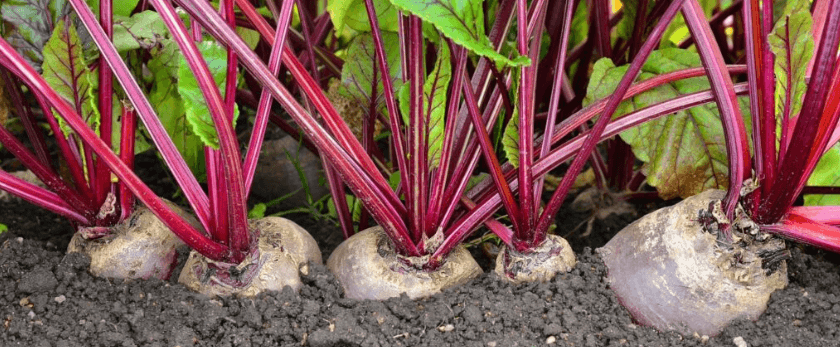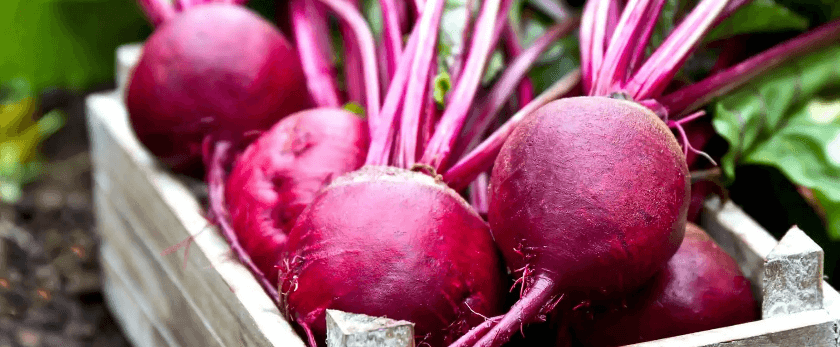Beets are a versatile and nutritious vegetable that can be grown in your own backyard. Not only are they easy to grow, but they also have a low carbon footprint and can be grown organically, making them a great addition to any eco-friendly lifestyle. In this article, we will discuss the steps to successfully grow beets, the best time to plant them, and common problems that may arise. So let's get started!
How to Care for Beets
Watering
Beets require consistent moisture to grow properly. They should be watered deeply once a week, providing about 1 inch of water. However, be careful not to overwater as this can cause the beets to rot. To check if your beets need watering, stick your finger into the soil. If it feels dry, it's time to water. If you live in a hot and dry climate, you may need to water more frequently.
Light
Beets prefer full sun, but they can also tolerate partial shade. If you live in a hot climate, providing some shade during the hottest part of the day can help prevent the beets from wilting. If you are growing beets indoors, make sure they receive at least 6-8 hours of sunlight per day.
Soil
Beets grow best in well-draining, loamy soil with a pH level between 6.0-7.0. If your soil is too acidic, you can add lime to raise the pH level. If it's too alkaline, you can add sulfur to lower the pH level. It's also essential to ensure that the soil is free of rocks and debris, as this can cause the beets to grow deformed.
Fertilizer
Beets are not heavy feeders, but they do benefit from a balanced fertilizer. You can use a slow-release organic fertilizer or a liquid fertilizer every 2-3 weeks. Be careful not to over-fertilize, as this can cause the beets to produce more leaves than roots.
Pruning
Beets do not require pruning, but it's essential to thin them out when they are about 2 inches tall. This means removing some of the seedlings to give the remaining ones enough space to grow. Thinning also helps prevent overcrowding, which can lead to smaller beets.

What is the Best Time to Grow Beets?
Beets are a cool-season crop, meaning they grow best in cooler temperatures. The ideal temperature range for growing beets is between 60-65°F. They can be planted in early spring or late summer for a fall harvest. If you live in a warmer climate, you can also grow beets in the winter.
Common Problems with Beets
Pests
Beets are relatively pest-resistant, but they can still be affected by some common garden pests. These include aphids, flea beetles, and cutworms. To prevent these pests, you can use natural methods such as companion planting, introducing beneficial insects, and using organic pest control products.
Diseases
Beets can also be susceptible to some diseases, such as powdery mildew, root rot, and leaf spot. To prevent these diseases, make sure to rotate your crops, practice good sanitation, and avoid overwatering. If you notice any signs of disease, remove the affected plants immediately to prevent it from spreading.
Bolted Beets
Bolting is when the beets produce flowers and seeds prematurely. This can happen if the weather suddenly becomes too hot, or if the beets are stressed due to lack of water or overcrowding. To prevent bolting, make sure to provide consistent moisture and thin out the seedlings when they are about 2 inches tall.
Responsible Disposal Methods for a Sustainable Future
When it's time to harvest your beets, it's essential to dispose of any leftover plant material responsibly. You can compost the leaves and stems, which will provide valuable nutrients for your garden. If you don't have a compost bin, you can also chop up the plant material and use it as mulch for your other plants.
If you have any leftover beets that you don't plan on eating, you can also donate them to a local food bank or community garden. This not only reduces food waste but also helps those in need.
Conclusion
Growing beets is a rewarding and sustainable gardening practice. By following the care tips mentioned above, you can enjoy a bountiful harvest of this nutritious vegetable. Remember to also be mindful of responsible disposal methods to reduce your carbon footprint and contribute to a more sustainable future. Happy gardening!










